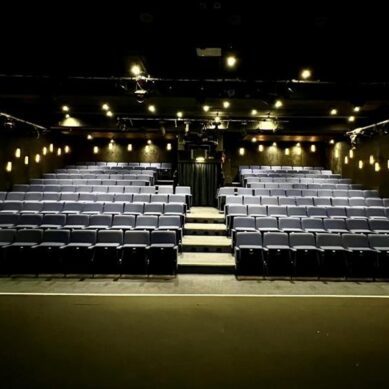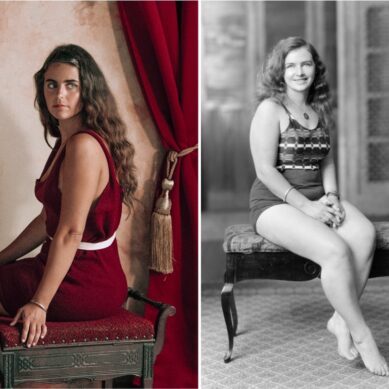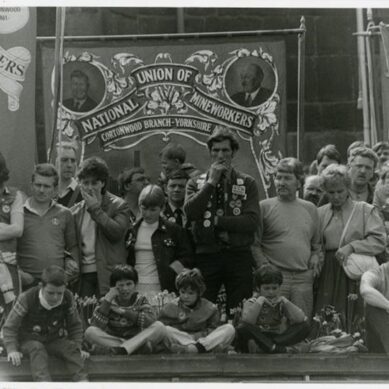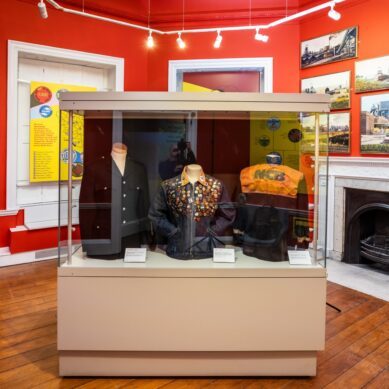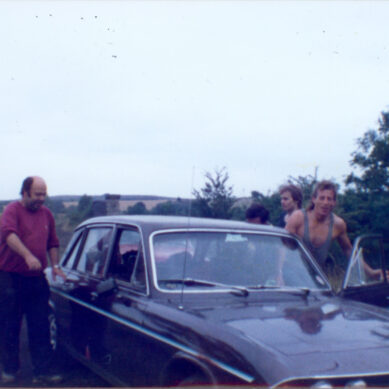This November marks 100 years since the greatest archaeological discovery ever made, that of Tutankhamun’s intact tomb found in the Valley of the Kings in 1922.
The treasures found inside that tomb made King Tut the most famous of all pharaohs, his gold death mask becoming the symbol of ancient Egypt. However, his short life on earth has not shared the same glorification as his immortal legacy.
But now, thanks to an immersive and interactive new exhibition at Experience Barnsley, King Tut’s existence will be brought to life on a personal and intimate level.
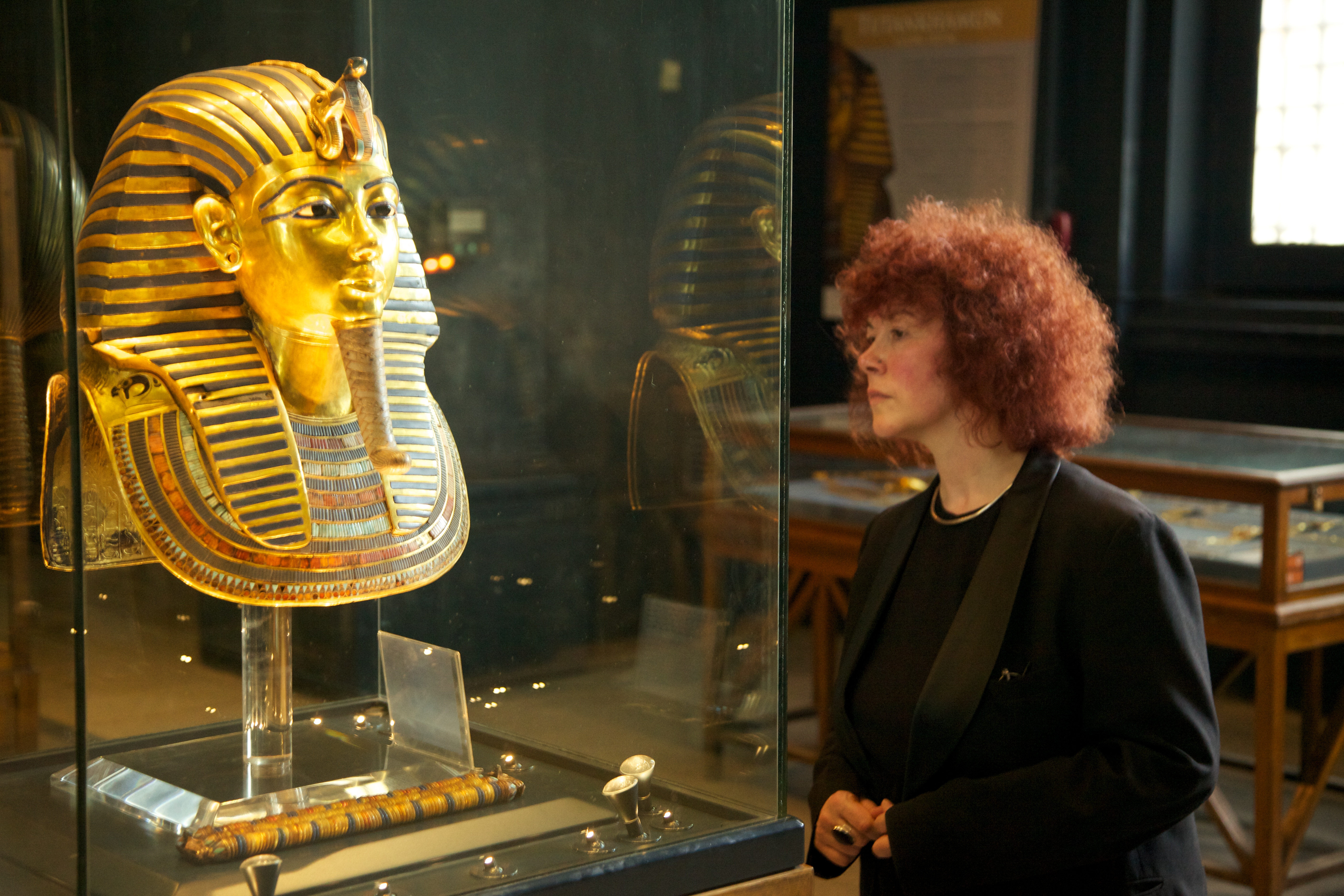
Tut22: the Life of Tutankhamun opens on Saturday 22nd October to celebrate the 100th anniversary of the tomb discovery. It has been curated by Barnsley-born Egyptologist, Professor Joann Fletcher who has hand-selected more than 250 objects and artefacts that tell the story of Tutankhamun from his birth in 1341 BC to becoming the ‘boy king’ aged nine in 1332 BC and his death at 19 in 1323 BC.
“Barnsley Museums have had previous exhibitions about ancient Egypt but this year we have really kicked it up a level. We’re moving away from death and tombs as there will be plenty of that to mark the centenary. I’ve been planning this exhibition for the best part of three years so I’m really excited – and I know what’s coming. This is the closest we’ve got to a time machine,” Joann says.
The exhibition is devised into different themes throughout King Tut’s life, with the objects kindly loaned from Bolton Museum’s renowned collection – some of which have never been on display before.
Visitors to TUT22 at Experience Barnsley will be able to see many artefacts that were found in Amarna, King Tut’s birthplace, including items used in childbirth or for babies which are rarely found in ancient Egypt exhibitions. Other objects include floor tiles and wall decorations from his palace, toys and games often depicted on wall paintings, as well as head sculptures of his family including his famous stepmother, Nefertiti.

There are also fascinating insights into the life King Tut lived, from the clothes and jewellery he’d have worn to the food he’d have eaten that has been preserved for 3,500 years. Some of the more personal items on display include a royal robe from his time and jars of the same eye makeup he used to paint on his heavy black eyeliner.
Joann has also included details of the wine King Tut liked to drink found in a wine cellar in his tomb, proven to be the oldest white wine from Egypt. There is also a stunning ancient goblet that would have been used to drink the wine from.
“The beauty of living in a rain-free country like Egypt is that items like the ones we have on display are preserved forever. We’re so privileged to have been allowed to borrow these objects from Bolton Museum and I have chosen things I think people will be able to relate to.”
The Barnsley Museums team has also worked with Front Row Live to digitise the exhibition through the use of augmented reality that they hope will inspire young visitors.
“The AR stuff has blown my socks off as it means the exhibition will literally bring ancient Egypt to life in 3D imagery. When I was a kid, I loved looking through history books about ancient Egypt and fell in love with the bright colours and smiley faces, so this will be so exciting for children and young people,” Joann says.
Joann was just six when she decided she wanted to become an Egyptologist, having become fascinated by the coverage of the Treasures of Tut exhibition at the British Museum 50 years ago in 1972.
Her mum told her she could do it as a job if she worked hard enough at school, with Joann going on to get a degree in Ancient History and Egyptology from University College London followed by a PhD. She has appeared in many TV and radio programmes about ancient Egypt, as well as undertaking excavation work in Egypt, Yemen and the UK.

An important focus of the exhibition for Joann was to show how the roads from ancient Egypt lead back to her hometown of Barnsley, particularly the people from Barnsley who were connected to the tomb discovery that sparked a renewed interest in the study of ancient Egypt.
“People tend not to associate Tutankhamun with Barnsley but from a cultural perspective, it should be more widely recognised. Hopefully the exhibition will make people think differently about that.”
The Bolton Museum’s collection was first assembled by the Midgley family whose family were from Cawthorne and worked for the Spencer-Stanhope family of Cannon Hall.
But one of the most interesting stories that TUT22 highlights is that of a Barnsley-born archaeologist who found the first clues to King Tut’s tomb many years before the famed discovery.
Harold Jones was born in Barnsley in 1877, the son of the headmaster of Barnsley School of Art. He earned a scholarship at Royal College of Art in Kensington where his artwork was inspired by what he’d heard of Egypt.
As a young man, Harold was diagnosed with TB and his physician prescribed a period of time abroad to a drier climate to ease his symptoms. At that time, the only way to travel was through work, so he gained employment as an archaeological artist in Egypt where he met Howard Carter and Lord Carnarvon, the men who would ultimately uncover King Tut’s tomb.
Harold worked for American millionaire, Theodore Davis, who was the private sponsor of Egypt’s antiquities service from 1902 to 1913 before it was taken over by Lord Carnarvon and his wealthy wife Lady Almina Wombwell, whose mother married into the Wombwell family of Barnsley.
While working in the Valley of the Kings, painting and drawing items pulled from tombs, Harold found various items bearing the name Tutankhamun, a name barely known back then after his legacy had been tainted and ignored due to the notoriety of his father, Akhenaten. One of the biggest clues that Harold found was a small tomb containing goldwork bearing Tutankhamun’s name in 1909.
Sadly, Harold died of TB in 1911 just a few days after celebrating his 34th birthday in Luxor, with Lord Carnarvon and Howard Carter organising his funeral. Part of the TUT22 exhibition will highlight the detailed paintings and drawings by Harold Jones from his time in the Valley that photography couldn’t replicate.

“Harold Jones never got the credit he deserved and it’s a real tragedy his name isn’t known because he became a brilliant excavator and an archaeological genius. Had he lived longer, the history of ancient Egypt may have been very different,” Joann says.
Howard Carter is the name widely recognised as the one who uncovered King Tut’s tomb in November 1922. While most pharaoh’s tombs were dug into the cliff faces of the valley, Tutankhamun’s was in the valley floor and its location had been lost, buried under debris of later tombs and workers houses built over its entrance, thus why it was found still intact having not been robbed of its 5,000 items that lie inside.
But Harold Jones was the one who first unmasked the name Tutankhamun.
The TUT22 exhibition runs from 22nd October until 18th March 2023. Throughout the six-month stay at Experience Barnsley there will be a series of interactive activities and educational sessions both in-person and online. Joann will be hosting various guided tours of the displays, as well as study sessions to discuss the various themes found within the exhibition such as food and clothing.
For more information, visit www.experience-barnsley.com
